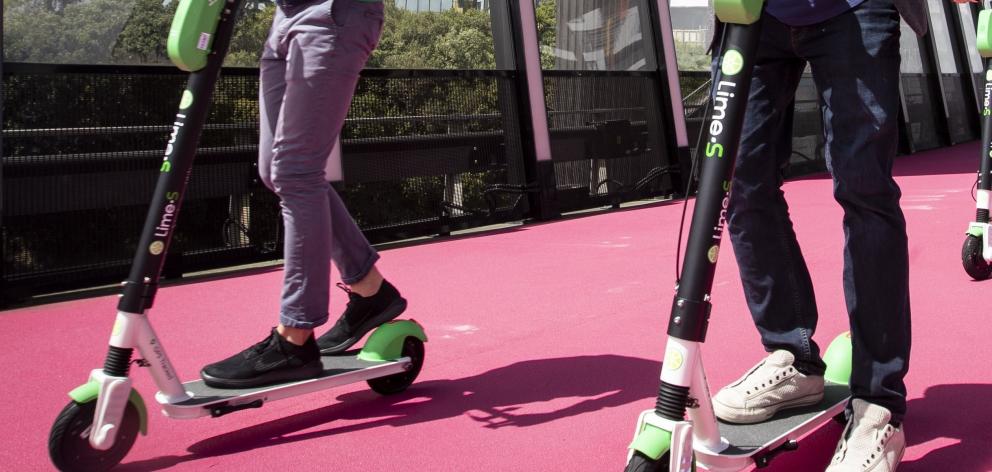
Riders find them, ride them and them deposit them when they are finished. They pay for the privilege.
Shared e-scooters took off around the United States, and are in more than 70 cities. They have caused controversy in many places, and the first rider deaths are being recorded.
Issues were minimal when privately owned e-scooters were few. But in New Zealand over the past two weeks reports have poured in about near misses with pedestrians, including small children and the elderly. Numbers of ACC claims for riders are rising fast, and fierce debate has erupted. They are classed by the NZ Transport Authority as a type of low-powered vehicle that does not require registration or a driver’s licence. They must have a maximum power output not exceeding 300W and they can be used on the footpath or the road, but not in designated cycle lanes that are part of the road.
On the footpath they must be operated in a careful and considerate manner and at a speed that does not put other footpath users at risk. They must give way to both pedestrians and drivers of mobility devices. On the road, they must be used as close as practicable to the edge. Helmets, while recommended, are not compulsory.
On one side of the road, so to speak, are those appalled by them and the hazards for riders and others. In this safety consciousness age, it seems extraordinary people should be exposed to such perils.On the other side are those who bemoan our negativity towards innovation and change, our regulatory culture, our intolerance and our disregard for personal responsibility.
Both views have some validity. Given overseas experience, some regulation will be needed as well as some acceptance of risk. A middle road needs to be sought.
Most complaints are about footpath riding. Whatever the NZTA rules might stipulate, there are hazards from these motorised conveyances scooting along the footpaths, potentially at relatively rapid speeds. Skateboards are bad enough. But the e-scooters take it to another level, and current rules are disregarded. Without doubt, collisions could kill vulnerable people.
Because adults on bikes are excluded from footpaths so, surely, should e-scooter riders. Why not, though, let them operate in bike lanes? Scooter company owners could also contribute towards bike-lane building and maintenance.
E-scooter riders themselves, however, will be especially vulnerable on the road. Scooters are lower than bikes and harder to see. Small wheels make them more susceptible to bumps and holes. E-bikes are becoming more common, and scooters could be treated like them. Helmets should be compulsory because of head injury risks, and hi-vis clothing needs to be encouraged.
While mandatory helmet wearing would cut casual use sharply, if e-scooters supplement public transport (as in for getting to and from the train stations or bus stops) as well as for regular fun, people could carry helmets just as they might coats or umbrellas.
Portland, Oregon is most of the way through a four-month trial. Its e-scooter rules at present include: walking scooters on footpaths, wearing helmets, riding in cycle lanes or on roads and the maximum speed is 15mph (24kmh). Many of these instructions are ignored.
Scooters are fast, fun, mostly easy to use and often convenient. They are can mesh with public transport and might help lessen traffic congestion and fossil fuel use Innovations need to be given a chance if at all possible, and New Zealand should not ban them, as has occurred in some cities. But they are dangerous. Regulations, and the effective enforcement these rules, are required.












